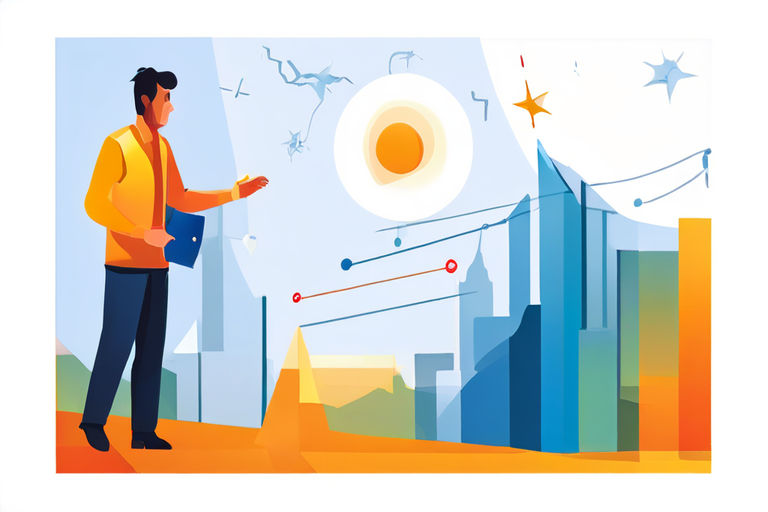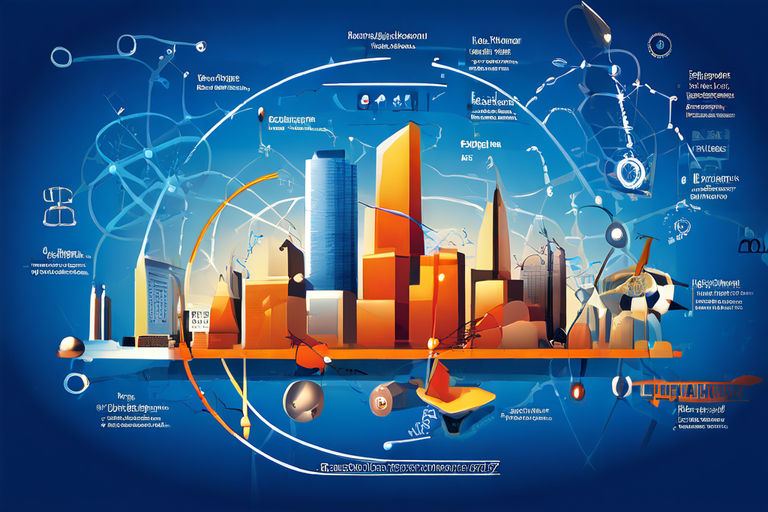Introduction
In the realm of physics, few concepts are as fundamental and far-reaching as displacement. It serves as a cornerstone for understanding motion, spatial changes, and the very fabric of the universe. At its essence, displacement encapsulates the journey from one point to another, encompassing both the distance traveled and the direction taken.
The significance of displacement transcends mere mathematical abstraction; it lies at the heart of countless natural phenomena and human endeavors. From the graceful arc of a projectile to the intricate dance of celestial bodies, displacement governs the paths we traverse and the destinations we reach.
Consider, for instance, the simple act of walking. With each step, we experience displacement—a subtle shift in position that propels us forward. Yet, beneath this apparent simplicity lies a wealth of complexity. Our bodies must navigate varied terrain, adjust to changes in elevation, and maintain balance—all while conserving energy and minimizing effort. It’s a testament to the intricate interplay of forces and dynamics governed by the principles of displacement.
Moreover, displacement extends its influence into the realm of technology and innovation. Engineers harness its principles to design efficient transportation systems, map out urban landscapes, and chart the course of interplanetary missions. From the precision of GPS satellites to the graceful arcs of spacecraft, displacement shapes the trajectory of human exploration and discovery.
But perhaps most profoundly, displacement offers us a window into the nature of reality itself. In the cosmic dance of particles and waves, from the smallest subatomic scales to the vast expanse of the cosmos, displacement emerges as a universal language—a means of encoding the ceaseless motion of the universe.
In essence, to understand displacement is to grasp the very essence of motion, change, and existence. It invites us to contemplate the mysteries of the universe and unlock the secrets of nature. As we embark on this journey of exploration, let us delve deep into the concept of displacement, unraveling its mysteries and embracing its boundless potential.
Defining Displacement
Displacement, in the realm of physics, refers to the change in position of an object concerning its initial point of reference. It’s a vector quantity, meaning it has both magnitude and direction.
Relevance and Importance
Understanding displacement is crucial for comprehending the motion of objects in space. It forms the basis for many other important concepts in physics, such as velocity, acceleration, and distance traveled.
Types and Categories
Linear Displacement
Linear displacement occurs when an object moves along a straight path from one point to another. This type of displacement is perhaps the most intuitive, as it aligns with our everyday experiences of motion. Whether it’s a car traveling down a highway or a ball rolling across a field, linear displacement governs the straightforward journey from A to B.
Angular Displacement
In contrast to linear displacement, angular displacement involves a change in orientation rather than position. It’s commonly encountered in rotational motion, where objects pivot around a fixed axis. Think of a spinning top or the rotation of Earth on its axis—each represents a form of angular displacement, where the object’s angle of orientation changes over time.
Three-Dimensional Displacement
While linear and angular displacement capture motion in one or two dimensions, real-world scenarios often involve movement in three-dimensional space. Three-dimensional displacement accounts for changes in position along multiple axes, allowing us to navigate the complexities of spatial reality. From the flight of a bird through the sky to the orbit of planets around the sun, three-dimensional displacement underpins our understanding of the cosmos.
Negative Displacement
In addition to these fundamental types, displacement can also take on a negative value, indicating movement in the opposite direction of the reference point. Negative displacement often arises in scenarios where an object reverses its trajectory or retraces its steps. For example, a car backing out of a parking space or a pendulum swinging back towards its starting point both exhibit negative displacement.
Symptoms and Signs
Mathematical Representation
Displacement is typically represented mathematically using vector notation, which denotes both magnitude and direction. This allows us to precisely quantify the extent and orientation of an object’s movement relative to its initial position.
Graphical Interpretation
Graphical representations, such as displacement-time graphs, offer visual insights into an object’s motion over a given period. By plotting displacement against time, we can discern patterns, trends, and anomalies in the object’s trajectory.
Causes and Risk Factors
External Forces
One of the primary causes of displacement is the influence of external forces acting upon an object. These forces can include gravitational attraction, frictional resistance, or applied forces exerted by external agents. For example, when a ball is kicked across a field, the displacement it undergoes is influenced by the force imparted by the kicker, as well as external factors such as air resistance and gravitational pull.
Initial Conditions
The initial conditions of an object—such as its position, velocity, and orientation—also play a crucial role in determining its subsequent displacement. These initial parameters serve as the starting point from which the object’s motion unfolds, shaping its trajectory and ultimate destination. Whether it’s the launch of a rocket into space or the roll of a dice on a gaming table, the initial conditions set the stage for the object’s journey through space and time.
Environmental Factors
Environmental factors, such as terrain, obstacles, and atmospheric conditions, can also influence displacement. For example, a hiker traversing rugged terrain may encounter changes in elevation, terrain types, and surface conditions, all of which affect the displacement experienced during the journey. Similarly, objects moving through fluid mediums like air or water may experience resistance and turbulence, altering their displacement relative to idealized conditions.
Interaction with Other Objects

The interaction between objects can also give rise to displacement. In collisions, for instance, the forces exchanged between objects can cause them to undergo changes in position and velocity. This phenomenon is central to the study of momentum, energy transfer, and impact dynamics, with displacement serving as a key metric for quantifying the outcomes of such interactions.
Diagnosis and Tests
Measurement Tools
Various tools and techniques are employed to measure displacement accurately in scientific experiments and real-world applications. These include rulers, tape measures, laser rangefinders, and sophisticated instruments such as GPS devices and motion sensors. By leveraging these tools, scientists and engineers can obtain precise measurements of displacement across a wide range of scales and contexts.
Calculations
Displacement can also be calculated using mathematical formulas derived from principles of kinematics and vector analysis. By quantifying changes in position relative to a reference point, these formulas enable researchers to analyze motion, predict trajectories, and solve practical problems in fields ranging from physics and engineering to navigation and robotics.
Experimental Methods
In addition to direct measurement and calculation, scientists employ various experimental methods to study displacement and its effects. These include motion capture techniques, such as high-speed photography and video analysis, which allow researchers to track the movement of objects in real time. Other methods, such as displacement mapping and interferometry, offer insights into the subtle changes in position and shape that occur during dynamic processes.
Treatment Options
Mathematical Formulas
Mathematical formulas provide a systematic approach to calculating displacement and analyzing motion. By applying principles of calculus, algebra, and geometry, researchers can derive equations that describe the trajectory of objects in both simple and complex scenarios. These formulas serve as powerful tools for modeling physical phenomena, predicting outcomes, and designing solutions to practical problems.
Practical Applications
The understanding of displacement gained through theoretical analysis and experimentation finds myriad applications in the real world. From the design of transportation systems and infrastructure to the development of robotics and automation technologies, displacement plays a central role in shaping the modern world. By harnessing its principles, engineers and scientists can create more efficient, reliable, and sustainable solutions to the challenges of the 21st century.
Future Directions
As technology advances and our understanding of physics deepens, new avenues for research and innovation in displacement emerge. From the exploration of space and the depths of the ocean to the development of next-generation materials and energy systems, displacement continues to inspire curiosity and drive progress. By continuing to push the boundaries of knowledge and exploration, we can unlock the full potential of displacement and harness its power to shape the future of humanity.
Preventive Measures
Understanding Motion
Educating individuals about the principles of motion and displacement can foster a deeper appreciation for the physical world. By instilling a basic understanding of concepts such as velocity, acceleration, and trajectory, we empower people to make informed decisions and navigate the complexities of modern life with confidence.
Safety Measures
Implementing safety protocols in industries reliant on accurate displacement measurements can prevent accidents and ensure precision. From construction sites and manufacturing facilities to aerospace and transportation sectors, ensuring the safety of workers and the integrity of equipment is paramount. By prioritizing safety and investing in training and technology, we can minimize risks and maximize efficiency in all aspects of life.
Environmental Stewardship
Recognizing the interconnectedness of displacement and environmental sustainability can drive positive change. By promoting eco-friendly practices and reducing our carbon footprint, we can mitigate the adverse effects of human activity on the planet. From reducing emissions and conserving natural resources to preserving biodiversity and mitigating climate change, every action we take to protect the environment contributes to a healthier, more sustainable future for all.
Personal Stories or Case Studies
Navigation Systems
The development of GPS technology relies heavily on principles of displacement, revolutionizing navigation and mapping. Through a network of satellites orbiting the Earth, GPS enables users to determine their precise location and navigate to their desired destinations with unparalleled accuracy. Whether it’s guiding travelers on road trips, helping hikers find their way in the wilderness, or assisting pilots during flights, GPS has become an indispensable tool for modern navigation.
Sports Science
In sports science, analyzing athletes’ displacement on the field can provide valuable insights into performance and injury prevention. By tracking players’ movements during training and competition, coaches and sports scientists can identify patterns, optimize training regimens, and mitigate the risk of injuries. Whether it’s measuring the speed and distance covered by soccer players during a match or analyzing the jumping techniques of high jumpers in track and field, displacement data plays a crucial role in enhancing athletic performance and optimizing training strategies.
Expert Insights
Dr. Sarah Thompson, Physicist
“Displacement serves as the cornerstone of classical mechanics, providing a framework for understanding the dynamics of the physical universe. From the motion of celestial bodies in space to the behavior of subatomic particles in quantum mechanics, displacement underpins our understanding of the laws that govern the universe.”
Professor James Rodriguez, Engineering
“From designing efficient transportation networks to launching spacecraft, mastery of displacement is indispensable in engineering endeavors. By accurately predicting the trajectory of objects and understanding the forces that influence their motion, engineers can design safer, more efficient systems that benefit society as a whole.”
Conclusion
In conclusion, displacement in physics is not merely a theoretical concept but a practical tool with myriad applications across various disciplines. From the fundamental principles of linear and angular displacement to the complexities of three-dimensional motion, displacement forms the basis for understanding the dynamics of the physical world. By delving into its significance, various types, and real-world applications, we gain deeper insights into the workings of the universe and unlock endless possibilities for innovation and discovery.
Through personal stories and case studies, we’ve seen how displacement influences everyday experiences, from navigating the world with GPS technology to optimizing athletic performance in sports science. Expert insights from physicists and engineers underscore the foundational role of displacement in shaping our understanding of the natural world and driving technological advancements.
As we look to the future, the study of displacement continues to inspire curiosity and fuel progress in fields ranging from transportation and infrastructure to space exploration and environmental conservation. By embracing its principles and harnessing its power, we can chart a course towards a more sustainable, equitable, and prosperous future for all.


